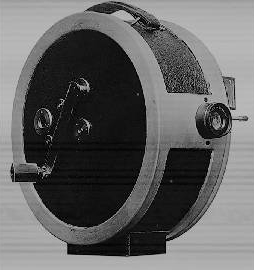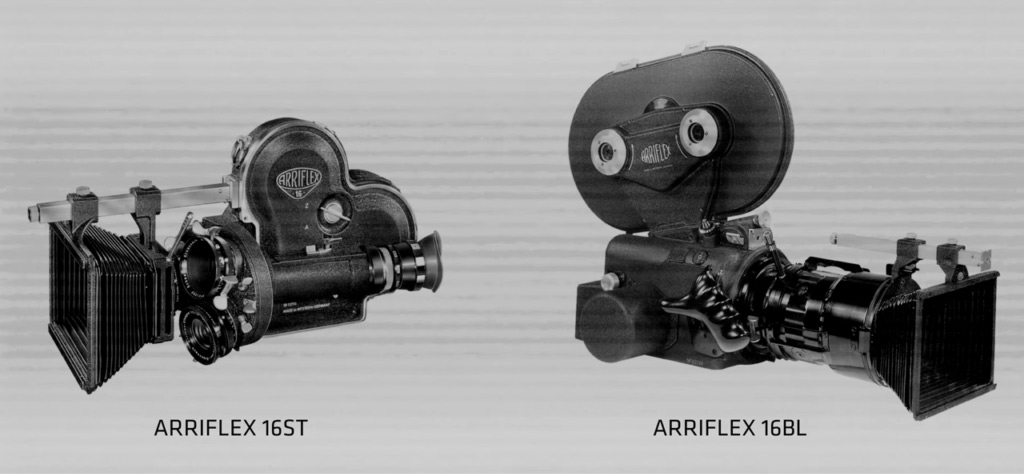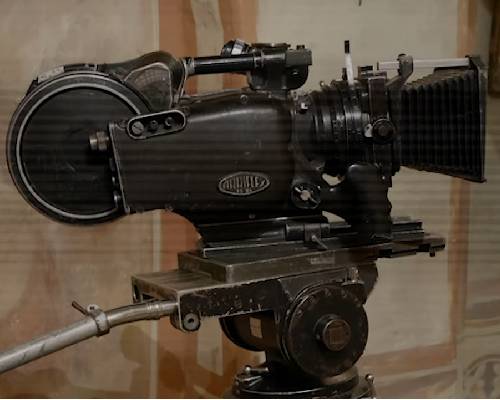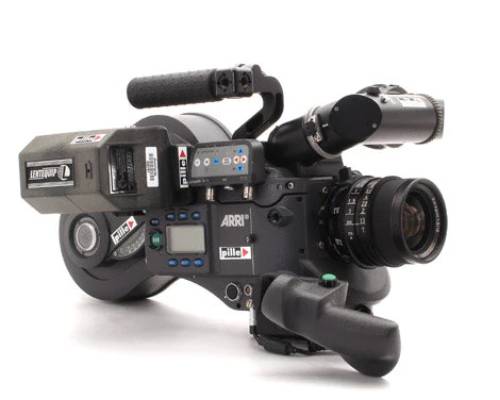Whether you’re invested in the Marvel multiverse or love non-fiction movies, we always admire the beauty of those movies. The image quality, the sharpness, and the vibrance are drooling over. But have you ever wondered, what camera are these shot on? What is Hollywood’s camera of choice? Chances are they are using something from ARRI, ARRI is a century-old camera company making world-class cameras, lenses, and accessories for filmmaking. Their cameras are so good that Hollywood filmmakers refuse to switch; they refuse to come out of the ARRI ecosystem. So what’s the history behind their success? Where do they come from, and how did they get here? In this article, we’re going to discuss the History of ARRI.
Inception
Let’s go back in time to 1917 in the city of Munich; August Arnold and Robert Richter had just founded ARRI. But, there weren’t selling masterpieces from the get-go; they started their business selling cinema accessories, light, and printing machines. Soon, they set up another shop in Tuerkenstrasse. Cinema and filming were already blooming for almost 22 years during that time. That’s when the founders decided to build an ecosystem around cinema and everything related to filmmaking. They didn’t want to limit themselves to just cameras or great camerapersons.
They got busy turning their vision into reality, working at Munich, improving their equipment. Moving forward to 1924, ARRI launched their first-ever camera, the KINARRI 35. The first camera was a success, and following that, they released the KINARRI MODEL 2. The Model 2 featured improvements over the first release, an adjustable rotary shutter, and a daylight film magazine. Despite this functionality, they marketed the 35mm amateur camera rather than the Model 2 one.

In 1925, Richter moved to America to sell their equipment and accessories. He was appointed as a camera assistant at Universal Studios, where he saw the large and bulky cameras Hollywood prefers. With this newfound insight, he returned to Munich and received an engineering degree from the Munich Technological University. Combining his newfound understanding and engineering knowledge was how the ARRI Cameras were designed.
Revolution
Fast forward to 1936, ARRI made its first breakthrough with the ARRIFLEX 35. Technically, that wasn’t a production-ready model but rather a prototype. However, they introduced the final product at the Leipzig fair within a year. What helped this camera stand out was that what you saw on the ground glass was identical to the actual scenario. It also helped filmmakers understand if their shot was in focus or not. The brilliance of this design made it stand out so much that writers had to distinguish between the camera company and the camera itself.
Soon the second world war began, and the ARRIFLEX 35 was the camera of choice for combat cameramen. Shortly, this camera gained popularity in New York because of the spinning mirror technology. Unfortunately, during the war, ARRI’s store in Munich was obliterated. But that didn’t become a massive hurdle, as they moved their production department to the Bavarian countryside before the war.

Then came 1941, when the second generation of the ARRIFLEX 35 was made. Again, this camera saw success as a handheld camera capable of filming documentaries and movies. In fact, “The Good, the Bad, and The Ugly” was shot on this camera. Shortly, this camera and its variants gained massive popularity and sold seventeen thousand units. Around this time, 16mm cameras dominated the TV commercial and documentary scene. So ARRI acted quickly and introduced the ARRI 16ST to the world. This camera was a direct competitor to Bell & Howell’s Filmo. Other variants of the 16ST were the 16M and 16BL. The latest variant was ARRI’s first silent camera.
Expansion
ARRI soon made its way into Hollywood and earned the praises of many renowned directors as a camera that’s well-built for filmmaking. “Easy Rider” was a movie that skyrocketed the success of ARRI’s cameras. Not only that, but that movie was the catalyst behind a new era of filmmaking in Hollywood. Following the movie’s success, the company launched 35BL – the first silent 35mm camera from the ARRI. It was unveiled at the 1972 Olympics and came with many new features. It was a camera to push 100fps and came in a compact and lightweight build.
Later in 1980, the 35BL came to light, and it was used to shoot many oscar-winning movies, such as “Taxi Driver,” “The Shining,” “Apocalypse Now,” and more. Their success inspired them to push further and make more revolutions. So in 1975, they came out with the ARRIFLEX 16SR. It was a silent 16mm camera with better ergonomics in mind featuring an ambidextrous design so that everyone could use it. ARRI camera users were already using ZEISS lenses during this time, but the 16SR features a bayonet mount. So, ARRI and ZEISS came together to make a super-speed prime lens unique to the camera, granting it the power to shoot at night-time.

Evolution
Moving forward to 1995, the ARRILASER was introduced, and it marked the coming of the digital age for ARRI. The printed helped print image files to film, soon becoming the industry standard. During this time, ARRI acquired Moviecam, another competition of the company. Soon after acquiring the company, the ARRICAM ST and LT was released in 2000. These cameras came with LDS or Lens Data System, which helped cinematographers know if the shot was on focus, iris zoom, and more data about the lens. Also, during this time, ARRI and ZEISS released the Ultra Prime Lens, which worked perfectly with the LDS.
Fast forward to 2003, the company gave the world ARRIFLEX 235. This was a unique camera as it took inspiration from dolphins. The unique shape of the camera granted it improved ergonomics and the ability to work underwater. In the same year, ARRISCAN was released, cutting down the entire post-process workflow. It made reading and writing data and the archival process easy, efficient, and affordable. Soon it was time for ARRI to step into the digital cinema universe. But instead of jumping the gun, they wanted to test the water. Hence, they came out with the ARRIFLEX D-20, a digital cinema camera only for rentals. Besides renting digital cine cameras, ARRI and ZEISS introduced a master prime lens. The year that followed, the company introduced its last 15mm camera, the ARRIFLEX 416. It was an amalgamation of ARRICAM’s tech, the aesthetic of 235, and the size of 16SR.

After that, however, it was time for ARRI to move from the analog days to the digital future. So, they released the D-21, another cine camera for rentals only. However, they specified it for TV production to safeguard the film market, and 56 units were available in only 13 rental houses worldwide.
ALEXA
In 2010, the legendary ARRI ALEXA was introduced to the world. It checked so many boxes, which gave the camera its legendary status. It followed, “why change it if it’s not broken strategy.” ALEXA came in a rugged body with a familiar menu button placement, and the images were reminiscent of the ARRICAM. These combinations made it a huge success. ALEXA paved the path for ARRI to move from analog to digital. It promised detailed, uncompressed 4K footage for HD television.

In 2010, the legendary ARRI ALEXA was introduced to the world. It checked so many boxes, which gave the camera its legendary status. It followed, “why change it if it’s not broken strategy.” ALEXA came in a rugged body with a familiar menu button placement, and the images were reminiscent of the ARRICAM. These combinations made it a huge success. ALEXA paved the path for ARRI to move from analog to digital. It promised detailed, uncompressed 4K footage for HD television.
100 Years
After 100 years since its inception, it can be said that the founders’ dream came true. They are now involved in everything related to cinema and the cinematic process, from lights, cameras, and accessories. In addition, the company offers more service through their rental services; lastly, ARRI Media is helping creatives with every aspect of post-processing.
Final Say
Over the years, cinema have changed, from aesthetics to techniques. However, ARRI has always provided tools to the creatives to make cinematography easy and fun, giving them the creative freedom to say their story the way they want. ARRI isn’t stopping anytime soon; their adventure will continue as long as cinema and cinematography exist. So that’s the history of ARRI. It’s apparent why their camera and ecosystem mean so much to Hollywood; their name is synonymous with cinema and cinematography. What do you think?







